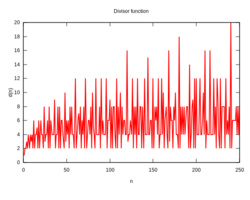Pretty basic right? #2
 The divisor function
σ
0
(
n
)
counts the number of divisors of any integer
n
. Evaluate the following sum
i
=
2
∑
4
×
1
0
7
σ
0
(
i
)
The divisor function
σ
0
(
n
)
counts the number of divisors of any integer
n
. Evaluate the following sum
i
=
2
∑
4
×
1
0
7
σ
0
(
i
)
The answer is 706353001.
This section requires Javascript.
You are seeing this because something didn't load right. We suggest you, (a) try
refreshing the page, (b) enabling javascript if it is disabled on your browser and,
finally, (c)
loading the
non-javascript version of this page
. We're sorry about the hassle.
3 solutions
@Abhishek Sinha Great approach Sir! Sir, would it be possible for you to kindly prove your proposition? Many thanks Sir!
a little more detail please!
C++!
S o l u t i o n 1 :
1 2 3 4 5 6 7 8 9 10 11 12 13 14 15 16 17 18 19 20 21 22 |
|
S o l u t i o n 2 :
1 2 3 4 5 6 7 8 9 10 11 12 13 14 15 |
|
Out of these two programs I would prefer the second one. The first one takes a long time for compilation, whereas the second is short and sweet!
Using PARI/GP where it would be better to use one's head.
1 2 3 4 5 6 7 |
|
Let N = 4 × 1 0 7 . By a simple double-counting argument, we have i = 2 ∑ N σ 0 ( i ) = ( i = 1 ∑ N ⌊ i N ⌋ ) − 1 Details : We evaluate the sum by counting the number of multiples of a number i upto the number N . Clearly it has ⌊ i N ⌋ multiples.